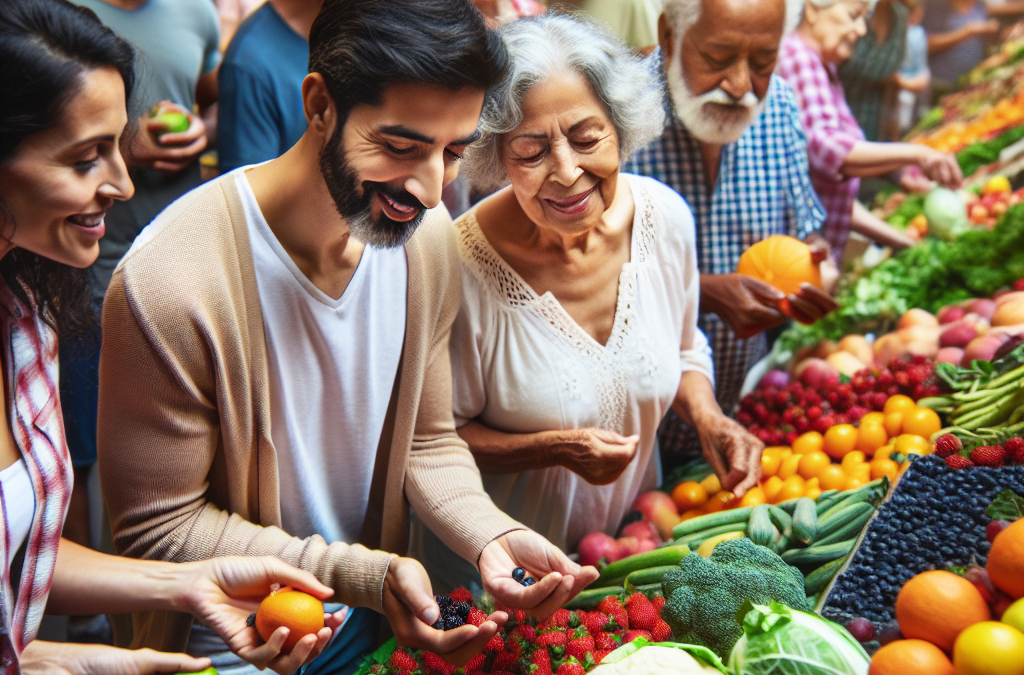Understanding Nutrient-Dense Foods
What Are Nutrient-Dense Foods?
The first time I heard the term “nutrient-dense,” it struck me as fancy jargon that just meant “healthy food.” But as I dug deeper, I learned these foods are packed with essential nutrients relative to their calorie content. Instead of counting calories, we should be focusing on what those calories are bringing to our bodies—vitamins, minerals, antioxidants, and fiber. Think of fruits, vegetables, whole grains, lean proteins, and healthy fats.
Exploring nutrient-dense options has changed my grocery shopping habits. I now reach for colorful produce, vibrant greens, and lean meats. The diversity makes meals exciting and visually appealing. Plus, it feels good to know I’m nourishing my body with the best ingredients possible.
This isn’t just a fad, either—science backs it up! Research shows that diets rich in nutrient-dense foods can improve longevity and lower the risk of chronic diseases. So, let’s embrace this idea and fill our plates with foods that do our bodies good.
How to Incorporate More Whole Foods
One of my favorite strategies for incorporating whole foods is prepping meals ahead of time. On Sundays, you’ll find me chopping veggies, cooking grains, and marinating proteins for the week. It makes reaching for a wholesome meal so much easier during those busy weeknights.
Another trick is to make swaps when cooking. Instead of using white rice, I’ve switched to quinoa or brown rice. Pasta dishes have become more about zucchini noodles or chickpea pasta. These substitutions not only boost the nutritional value but also add unique textures and flavors that keep things interesting.
Lastly, don’t underestimate the power of smoothies! They’re a delicious, quick way to pack in various fruits and veggies. Toss in some spinach, a banana, berries, and a scoop of nut butter, and you’ve got a fantastic and filling snack or breakfast. Trust me, your body will thank you!
Cooking Methods Matter
The way we prepare our foods can significantly impact their nutritional value. I’ve learned that steaming, sautéing, or roasting is often much healthier than frying. For example, roasting root vegetables caramelizes their natural sugars, amplifying the flavor without adding unhealthy fats.
Another method I swear by is batch cooking. Not only does it save time, but it also keeps me from resorting to less healthy options. I create a few big meals each week—like a colorful veggie stew or a hearty grain salad—that lasts through lunch or dinner.
It’s also essential to be mindful of seasoning. Instead of pouring on heaps of salt, I’ve started using herbs, spices, and citrus. This not only enhances the taste but also adds health benefits, transforming my meals into powerhouse dishes.
Building a Balanced Plate
The Importance of Macros
Understanding macronutrients has helped me create better meals lately. Carbs, proteins, and fats each play a role in providing energy and keeping our bodies functioning optimally. With every meal, I try to include a balance of these—it’s not just about eating salad anymore!
For example, I love pairing quinoa (a great source of protein and carbs) with a variety of roasted veggies and a drizzle of olive oil (healthy fats). This combo fills me up while also giving my body the nutrients it craves.
Moreover, listening to my body is key. Some days, I’ll feel like I need more carbs before a workout, while other days, I crave protein. Paying attention makes it easier to build a balanced plate according to my needs.
Portion Control and Mindful Eating
Honestly, portion control has been tricky for me at times. I can easily pile my plate high and then feel sluggish afterward! Lately, I’ve started listening to my hunger cues and serving smaller portions to avoid that stuffed feeling.
Mindful eating has also become a game-changer. Taking the time to focus on each bite, setting my phone down, and truly enjoying my meals has made me appreciate food more. Plus, it allows me to notice when I’m satisfied instead of stuffed!
I’ve even incorporated mindful eating practices during snack time. Instead of munching mindlessly, I try to eat more consciously—savoring the flavors and textures of what I’m enjoying, which ultimately enhances my relationship with food.
Track Your Progress
Finally, I can’t stress enough how beneficial it is to track my food intake and progress. I’ve started using a simple journal to note my meals and activities, which helps me stay accountable and motivated. Seeing what I’m eating and how it affects my energy allows me to adjust accordingly.
Get an Amazing Discount on the Best Certified Organic Whole Food Supplement!
There are also apps out there that are super helpful for tracking nutrient intake. They break down the info, so it’s easier for me to visualize where I might need to adjust my diet. Knowing how much fiber or protein I’m consuming has guided me to make better decisions.
Reflecting on this journey makes me proud. Celebrating small victories—like cooking a new recipe or choosing a healthy snack over something processed—keeps the momentum going and encourages me to keep exploring whole foods!
Embracing the Journey of Healthy Aging
Curiosity to Learn More
Approaching healthy aging with a spirit of curiosity has made all the difference for me. Every week feels like an adventure where I’m trying new recipes, products, or learning about different ingredients. I love diving into cookbooks or food blogs to discover ways to incorporate whole foods into my meals.
Joining cooking classes or nutrition workshops has expanded my knowledge base significantly. Connecting with others who share a passion for food and health energizes me and keeps learning fun. You never know when you might find a new favorite ingredient or technique!
Incorporating this continuous learning mindset transforms healthy aging from a chore into something I genuinely look forward to. I feel inspired to keep discovering what nourishes me best as I move through life.
Forming Supportive Habits
Surrounding myself with like-minded individuals has been crucial in maintaining a healthy lifestyle. My friends and family have become my accountability partners, and we often share meals or recipes. It’s so much easier to make healthy choices when you have a buddy or a group to share the journey with!
I’ve started going to local farmers’ markets with friends to pick out fresh produce together. Not only are we supporting local farmers, but we also encourage each other to try new items. Sometimes, I venture out of my comfort zone, and that’s how I’ve discovered new favorites!
Also, setting goals—like plant-based Mondays or smoothie-making Sundays—has turned healthy choices into fun rituals. These supportive habits make healthy living more enjoyable and sustainable long-term.
Finding Joy in Whole Foods
Ultimately, the key to healthy aging lies in finding joy in whole foods. Food should never feel like a punishment; it should be an experience filled with flavors, colors, and satisfaction. Cooking with friends or family transforms healthy meals from solitary events into joyous gatherings.
Every meal can be an opportunity to explore cultural cuisines that might inspire new flavors and creations in my kitchen. Experimentation is half the fun—who knows, I might whip up a new favorite dish!
So let’s embrace the process, enjoy satisfying our taste buds, and remember that we’re fueling our bodies for longevity and health. Healthy aging doesn’t have to be dull; in fact, it can be the most vibrant journey of all!
FAQ
What are some examples of nutrient-dense foods?
Nutrient-dense foods include leafy greens, colorful vegetables, berries, nuts, whole grains, and lean proteins. These foods provide essential vitamins and minerals without excessive calories.
How can I incorporate whole foods into my diet?
Start by prepping meals ahead of time, making healthy swaps, and exploring creative ways to enjoy fruits and veggies, such as smoothies. Don’t forget to experiment with cooking methods to keep things interesting!
What does a balanced plate look like?
A balanced plate includes a good mix of carbohydrates, proteins, and fats. For example, pairing quinoa with roasted veggies and a source of lean protein, like chicken or fish, can create a satisfying meal.
How does mindful eating benefit my health?
Mindful eating helps you enjoy your food more and recognize when you are full, which can prevent overeating. It’s all about being present during meals and appreciating the flavors and textures.
How can I make healthy aging enjoyable?
Find joy in the process by being curious, experimenting with new recipes, and surrounding yourself with supportive friends and family. Healthy aging is a journey, so make it exciting by continuously exploring whole foods!




